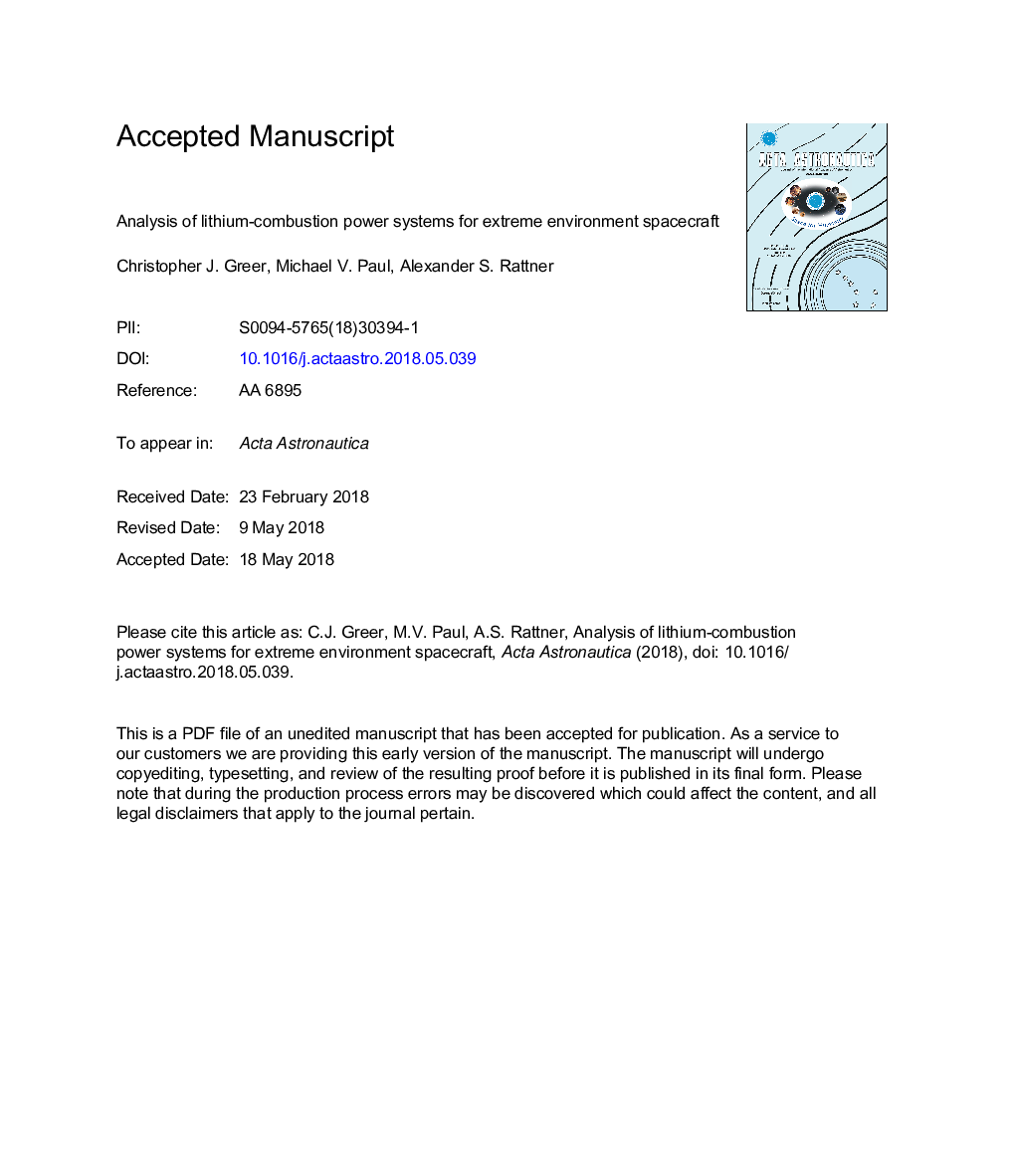| کد مقاله | کد نشریه | سال انتشار | مقاله انگلیسی | نسخه تمام متن |
|---|---|---|---|---|
| 8055384 | 1519904 | 2018 | 40 صفحه PDF | دانلود رایگان |
عنوان انگلیسی مقاله ISI
Analysis of lithium-combustion power systems for extreme environment spacecraft
ترجمه فارسی عنوان
تجزیه و تحلیل سیستم های قدرت احتراق لیتیوم برای فضاپیمای محیطی شدید
دانلود مقاله + سفارش ترجمه
دانلود مقاله ISI انگلیسی
رایگان برای ایرانیان
کلمات کلیدی
سیاره زهره، اروپا، لیتیم، قدرت، استرلینگ،
موضوعات مرتبط
مهندسی و علوم پایه
سایر رشته های مهندسی
مهندسی هوافضا
چکیده انگلیسی
The longest duration mission on the Venus surface was Venera 13â¯at just over 2â¯h. This time constraint was due to limited battery power life and craft thermal management challenges. A lithium combustion based power system has been proposed to increase landed mission durations for Venus and other extreme environment targets. This paper presents a new detailed thermodynamic and heat transfer model of a conceptual lithium combustion power system. Findings are applied to specify engineering requirements for potential missions. Results indicate that a lithium combustion power system using the in-situ carbon dioxide atmosphere as an oxidizer could power a Venus lander for up five days (24â¯h, Earth day) with 185â¯kg of fuel, delivering 14 kWth thermal energy continuously. Even greater durations are possible if lower power missions are considered. The potential performances of a Li-CO2 powered Stirling engine and sulfur-sodium batteries were compared. It was found that sulfur-sodium batteries would require about 1.75-2.5 times more mass to provide 1â¯kW of power output for mission durations of five to ten days, respectively. A lithium combustion power system with a sulfur-hexafluoride oxidizer could power a Europa lander at 94W with a Stirling engine for up to twenty days with 43â¯kg of reactants mass. Lithium-combustion activated Stirling engines and TEG arrays were compared with batteries to meet this power and mission duration requirement. It was found that batteries would require less mass than either lithium-fueled system. However, for mission durations longer than twenty-six days the Stirling engine power system may require less total mass than batteries. Future work will include laboratory-based experimental studies to validate results and improve heat transfer closure models.
ناشر
Database: Elsevier - ScienceDirect (ساینس دایرکت)
Journal: Acta Astronautica - Volume 151, October 2018, Pages 68-79
Journal: Acta Astronautica - Volume 151, October 2018, Pages 68-79
نویسندگان
Christopher J. Greer, Michael V. Paul, Alexander S. Rattner,
